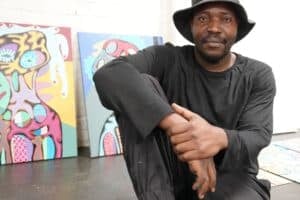Braided or boldly beautiful, coiffed or curled, natural or neon – hair can take on many different forms.

However, its cultural significance is often downplayed and, without realising it, we bring a bit of our own heritage into the choices we make when choosing a style for our locks.
“Hair has been enormously topical since the colonists first made the distinction between their hair and the hair of the locals,” says Professor Anitra Nettleton, curator of the Doing Hair: Hair and Art in Africa exhibition at the Wits Art Museum. The political, social, cultural and economic implications of hair and hairdressing are explored in detail at the exhibit, with sculptures, paintings and thought-provoking interactive displays.
“We draw distinction between different types of hair, even in small cultural groups. Look at religion and hair, like the rules of religious Jewish and Muslim people. We’ll never get rid of it. Hair is so firmly engrained in us. We are wired to make distinctions based on hair,” says Nettleton.
Recent years have seen people making a move back to their roots, so to speak. Weaves and relaxers are being forgotten, and bold, natural looks are coming to the fore.
“The minute that you run a comb through your hair it becomes a cultural object. In the fashion world, a certain look is considered beautiful, which is incredibly stupid,” Nettleton says.
“Hair can also show where you are at a particular stage of your life. That in itself carries a whole cultural heritage.
“There is a movement among Zulu women who are going back to rural communities to do rite-of-passage rituals. This is political as much as it is cultural. They want an identity not based on Western ideas.
“We live in an interesting country and in interesting times. The US, for example, isn’t facing issues as we do. If you think about the shaving of heads in the army, it’s about issues of control. My children went to one of the first integrated nursery schools.
“I remember there were children of a black psychologist there and he was most disturbed because his children would come home and do this,” Nettleton tosses her hair out of her face in a move reminiscent of Paris Hilton’s infamous hair flip, and chuckles.
Hair can also be used as a means of control. Men entering the army have their heads shaved – a phenomenon explored at the exhibition in a video by Paul Emanuel. He sees the removal of soldiers’ hair as a removal of their individuality. In a similar controlling vein, schoolchildren have to stick to a set of rules that may continue the canalisation of girls and boys into prescribed gender roles.
“In primary schools, boys can’t have long hair, but girls can as long as they tie it in a pony. It’s a divide that is pointless,” Nettleton says vehemently.
Another fascinating project at the exhibition is a series of photos taken of an English teacher in the Eastern Cape who forced her students to shave their heads.
Her logic was that gangs in the area had a particular hairdo. By making it impossible for the boys to have the style, she felt she was separating them from gang culture.
“Hair is a way of making people conform,” Nettleton says.
Info:
> Doing Hair: Art and Hair in Africa is on until November 2
> The opening hours for WAM are Wednesday to Sunday, 10am-4pm
> Visit wits.ac.za/witsartmuseum for more






